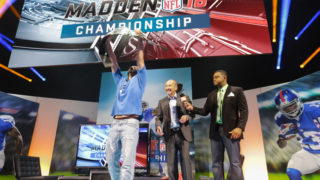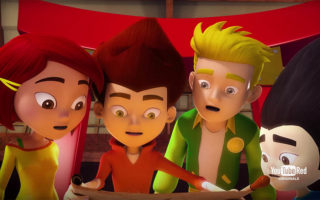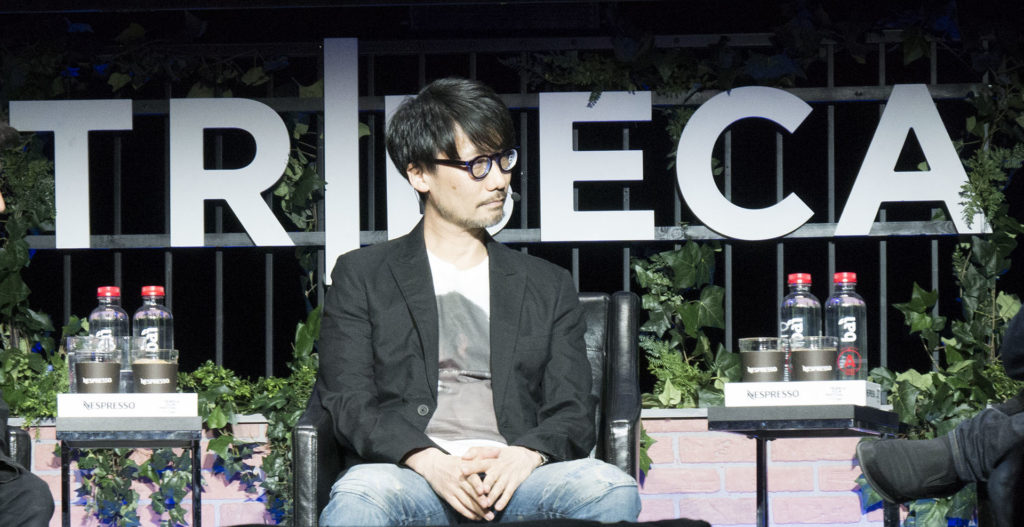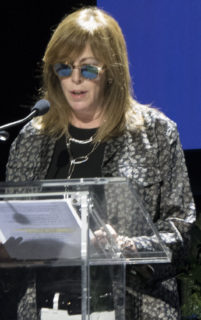The top 32 Madden NFL 17 video game players have converged at ESL’s Burbank Studios to crown a Madden Champion for 2017. There’s $500,000 up for grabs, as well as bragging rights and the chance to be a virtual star on the NFL Network on May 14, 9pm ET. For Electronic Arts and the NFL, the event helps feed the insatiable appetite of football fans year-round.
Madden Championship Series Commissioner Matt Marcou told AListDaily that this event is the culmination of a year-long circuit of 22 sanctioned events, which included three EA Majors (Madden Classic in December, Madden Bowl in February and Madden Challenge in April), nine premier events in the NFL Club Series and the upcoming Madden Championship.
“We’ve graduated from last year’s two independent events with a championship at the very end to this comprehensive structure, which is the most fair format to discover top competitors in the most competitive game mode,” Marcou said.
EA saw more than 2.4 million gamers compete in Madden‘s online ranked mode. Out of that pool, 1,432 players advanced from a ranked mode to an online tournament or traveled to a Pro Am Challenger event.
 “The ability to compete and earn in-game rewards makes up the bottom of the competitive pyramid and fits into the goal of making a star out of everyone,” Marcou explained. “The 1,432 folks represent the top one percent of our community. These are the equivalent of the college-level football players hoping to go pro. The 32 players competing for the big prize represent the core of the core.”
“The ability to compete and earn in-game rewards makes up the bottom of the competitive pyramid and fits into the goal of making a star out of everyone,” Marcou explained. “The 1,432 folks represent the top one percent of our community. These are the equivalent of the college-level football players hoping to go pro. The 32 players competing for the big prize represent the core of the core.”
Overall, about 60 competitors won prize money at an EA Major or Challenger event this year. The 32 players left at the end of the series have each made $10,000 to $15,000 during the course of the year.
Marcou said the EA Majors have attracted millions of fans through the NFL Network, although he couldn’t release online viewership numbers. That partnership also incorporates some of the network’s on-air broadcast talent, including Maurice Jones Drew, who will be part of the Madden Championship crew.
EA partnered with ESL as its broadcast and production partner for the Madden Championship, but the competitive program throughout the year from the Challenger to Premiere events are operated internally by an EA operations team.
Three players competing in the Madden Championship tournament come from the new NFL Club Series tournament. Marcou compared this event, which was run by the NFL and eight of its clubs, to a March Madness style tournament. Gamers competed online to earn the chance to become a top four Xbox One and top four PlayStation 4 Madden player in eight regions that aligned with an NFL team like the Dallas Cowboys, Seattle Seahawks and Jacksonville Jaguars. The eight club champions competed at ESL Burbank to award the 32nd slot in the tournament. Two other players who competed in the NFL Club Series are also in the Madden Championship.
Marcou believes that all 32 teams could get involved in the NFL Club Series next year. “We think the program was successful and we want to refine and build off that,” Marcou said. “There’s nothing official to announce on how that will evolve next year, but there’s great long-term potential for that tournament.”
EA has used three game modes throughout the year: Patriots vs. Falcons for the Challenger Series, Draft Champions for the Madden Classic and the Madden Challenge and salary-capped Madden Ultimate Team for the NFL Club Series, the Madden Bowl and the Madden Championship.
“It’s about how do we capture the spirit of all the unique EA game modes and make each competition as distinct as possible,” Marcou said. “The time of year and game modes distinguish the events. We want to make each event unique and special, while ensuring the competition is run fairly.”
Players can use PlayStation 4 or Xbox One for online and Challenger events, but for NFL Club Series and EA Majors, Xbox One is the platform. Microsoft is a sponsor of the Madden Challenge and Madden Championship. Competitors can play with PS4 controllers connected to an Xbox One at any event.
While traditional esports powerhouse Luminosity signed top Madden player Eric “Problem” Wright to its roster, Marcou said the Madden Championship Series has given rise to a new wave of gaming organizations like Set to Destroy and In Control Gaming.
“These is a reflection of a different type of gamer and a more console-oriented audience,” Marcou explained. “It’s an interesting dynamic, and we welcome any support for Madden competition.”
Those who tune in for the Madden Championship will see the Xbox brand throughout the custom-built stadium’s billboards and digital signage, but unlike the recent Madden Bowl with the McDonald’s logo on the virtual field, only the red Madden Championship logo will be painted there.
“The competitive gaming division has a strong relationship with brands,” Marcou said. “As we evolve traditions will evolve and future Madden Championship fields could get placements on the field itself.”



![[Left] Doug Liman, movie director (Edge of Tomorrow,. [Right] Ken Levine, game developer (BioShock)](https://www.alistdaily.com/wp-content/uploads/2017/05/Doug-Liman-and-Ken-Levine-Tribeca-Games-Festival-e1493670516253-320x187.jpg)
![[Left] Howard Schwartz, president and co-founder, Hip Hop International. [Right] Karen Schwartz, co-founder, Hip Hop International](https://www.alistdaily.com/wp-content/uploads/2017/04/Howard-and-Karen-Schwartz-Hip-Hop-International-e1493318186921-320x310.jpg)

